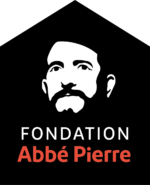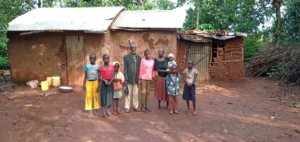For access to quality education and housing for all in Busia County
State : In progress | Number of beneficiaries : 3000 people
Project duration : 3 years
Location : Villages of Alupe, Angorom, Amerikwai and Aget, Busia County, Kenya

Local partner
The LEC (Legacy Education Center) is a non-profit institution, established in 2010, intended to provide advocacy, women and youth empowerment programs and education opportunities to the most vulnerable children in the community of Mathare slum. It is a community-based organization registered with the Government of Kenya with registration number KAS / CBO / 5/4/2012/495. Its leadership is made up of two members (Leah Nyalobo and Sarah Rono) approved to take on leadership roles by the Government of Kenya which has mandated them through the registration certificate above.
LEC has already implemented several projects in Mathare, including:
- The children’s school sponsorship program,
- The program Safisha Kijiji (Keep Your Slum Clean),
- The project for the return to school of all girls,
- The entrepreneurial skills development project,
- The project for the empowerment of children through sport.
The issue of habitat has also been addressed by the LEC before. The association implemented a housing renovation project for widows and the most vulnerable families in Busia County, eastern Kenya. This project was made possible through local fundraising and the collaboration of local county authorities. Together, they have also set up temporary reception structures, in particular for flood victims. The members of the LEC have since worked in close collaboration with these authorities who ask them in particular to deploy counseling services to populations who are victims of GBV (gender-based violence). GBV being very present in the area, and impacting the daily life and living conditions of the populations.

Context
Kenya has experienced significant economic and demographic growth for almost a decade. However, the latter was accompanied by significant disparities.
The political transition initiated in 2003 has been a factor of change and development, providing the country with good economic health. Kenya has thus acquired infrastructure, in particular by building roads and railway lines.
At the same time, the country has observed exponential urban population growth rates (+ 2.2% per year between 2009 and 2019), among the highest in the world. For example, the capital, Nairobi, has doubled its population in 15 years and is today one of the largest metropolises in Africa, with more than 8.3 million inhabitants. It is expected to double again by 2035, and triple by 2050.
However, this development is not favorable to all: nearly half of the Kenyan population today lives below the poverty line and in poor housing conditions.
For example, Busia County, which runs along the Ugandan border in the far west of the country, is ranked among the poorest in Kenya; the poverty rate reaches 60% while it is 44% nationally. It is home to a population of nearly 900,000 inhabitants, half of whom (48%) are children and young people. In the area, living conditions are difficult, incomes uncertain and prospects for the future limited. Indeed, agriculture, fishing and trade, which constitute the main economic activities, are affected by climate change, causing the families who find themselves more confronted with poverty to suffer.
The mission
Overall objective: To contribute to a sustainable improvement in the living conditions of the most vulnerable people in Kenya.
Specific objective: To provide access to education and safe housing to the most vulnerable people in the rural area of Busia County in Kenya.
Activities
- develop adequate capacities for preventing GBV for 50 families: identification of families, support for the development of income-generating activities, granting of micro-credits allowing the financing / renovation of housing, sensitization to gender-based violence and home visitation organizations, capitalization
- develop model hygiene practices and capacities in the county: renovation of showers and latrines for 40 families and 2 sanitary blocks in a primary school for 800 students, renovation of showers and latrines in a local market for around 500 people, construction of showers and latrines for 10 families, training campaigns in hygiene for the whole community, capitalization
Beneficiaries
3,000 beneficiaries including 100 families, 800 students from a school and 1,500 community members
